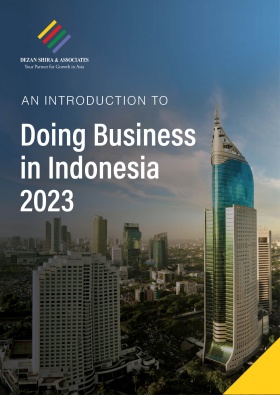Powering Progress: Indonesia Unveils Largest Floating Solar Power Plant in Southeast Asia
On November 9, 2023, Indonesia’s President Joko Widodo inaugurated Southeast Asia’s largest floating solar power plant in the Indonesian province of West Java. It is also the third-largest floating solar farm in the world.
The 192-megawatt peak (MWp) plant is a project spearheaded by Indonesia’s state-owned utility company Perusahaan Listrik Negara (PLN) and Abu Dhabi-based renewable energy company Masdar. The project was estimated to have cost some US$143 million and is part of the government’s efforts to harness Indonesia’s huge renewable energy potential and reach net-zero emissions by 2060.
The floating solar farm is expected to generate 245 gigawatt-hours of electricity per year, or enough to power 50,000 households. Indonesia’s government aims to expand the project to 500 MWp and could generate as much as 1,000 MWp in the future.
Indonesia’s Renewable Energy Pathway
Indonesia committed to having renewables contribute to 23 percent of its energy composition by 2025, but this figure currently sits at just 12 percent. Moreover, it is the world’s largest exporter of coal, and coal is responsible for about 60 percent of its own electricity generation.
In September 2022, Erick Thohir, Indonesia’s Minister for State-Owned Enterprises, said that retiring 15 gigawatts of coal power generation over the next three decades requires US$600 billion in capital support. The Just Energy Transition Partnership (JETP), then, is a step towards meeting these needs. The JETP is a new model for international cooperation on country-specific efforts to combat climate change. The JETP model combines public and private investments to assist with climate financing for developing countries, particularly to transition energy generation away from fossil fuels. In addition to driving energy transition, the JETP model seeks to promote the green economy and address the economic and social needs of communities vulnerable to the effects of energy transitions.Indonesia’s JETP is jointly led by the US and Japan and is supported by the UK, Germany, France, the EU, Canada, Italy, Norway, and Denmark. Of the JETP’s initial US$20 billion in financing, US$10 billion will come from public sector pledges and US$10 billion will be mobilized from a set of private sector financial institutions.
The Indonesian government has made the development of its green economy a crucial part of both its energy transition and economic development strategies. In addition to transitioning Indonesia’s energy composition, the JETP stands to improve the business environment for Indonesia’s green economy by building infrastructure for renewables and improving financing vehicles for sustainable projects.
Huge geothermal potential
Indonesia is home to some 40 percent of the world’s geothermal resources, and the sector will be key to the country’s energy sustainability goals.
Despite Indonesia’s vast resources, investing in its geothermal sector presents numerous challenges, ranging from a difficult regulatory environment to a lack of supporting infrastructure. However, the sector presents promising long-term potential, particularly since the government has targeted geothermal production capacity to reach 5,000 MW by 2025.
Indonesia’s geography makes the island nation uniquely placed to tap into geothermal energy. Located by the Ring of Fire, the seismic activity surrounding Indonesia is extremely active, providing ample geothermal energy potential. Due to these features, Indonesia has an estimated 23.7 gigawatts of geothermal capacity across 300 sites.
According to the General Plan for National Energy (RUEN), Indonesia plans to reach 7.24 gigawatts of geothermal power by 2025 – which government officials said would necessitate US$15 billion in investment – and 9.3 gigawatts by 2035. However, in June 2020, Ida Nuryanti Finahari, the geothermal director of the Energy and Mineral Resources Ministry (ESDM), said that Indonesia would achieve its goal of having about seven gigawatts of geothermal power production by 2030, which would be five years behind schedule.Although the development of geothermal energy in Indonesia has not progressed according to plan, it is still one of the world’s largest producers of geothermal energy. Currently, Indonesia has about 2.28 gigawatts of installed geothermal power capacity; the US has 2.6 gigawatts of installed geothermal power capacity, the most in the world.
About Us
ASEAN Briefing is produced by Dezan Shira & Associates. The firm assists foreign investors throughout Asia and maintains offices throughout ASEAN, including in Singapore, Hanoi, Ho Chi Minh City, and Da Nang in Vietnam, in addition to Jakarta, in Indonesia. We also have partner firms in Malaysia, the Philippines, and Thailand as well as our practices in China and India. Please contact us at asean@dezshira.com or visit our website at www.dezshira.com.







